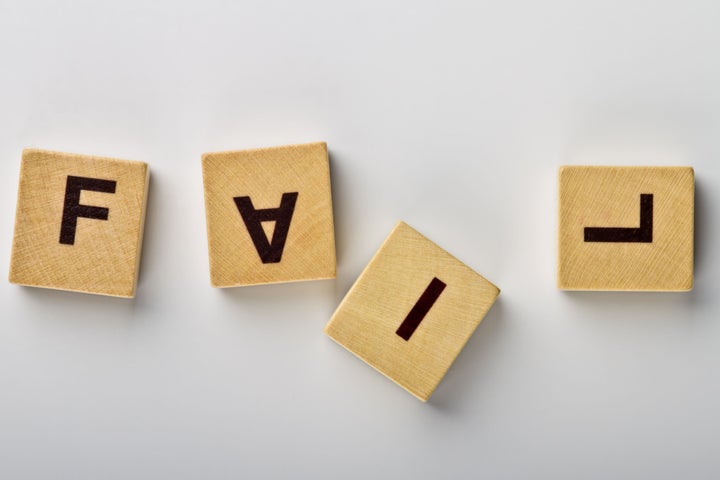
By Leza Lowitz
Every year, people make resolutions to start yoga, lose weight, change their diet, begin meditating and become healthy. Every year, they fail miserably.
And that's a good thing, says yoga teacher Ted Lafferty of the Yoga Studies Institute in Arizona, because we fail forward. If we didn't fail, we'd never evolve. This isn't just New Age thinking. In Buddhist cosmology, if we're all about pleasure, we're living in a "god realm" and have no need to leave it. Conversely, if we're always in pain, we're in a hell that is nearly impossible to escape from. Somewhere in the middle are ordinary human beings, who need an edge to move forward. "We don't get motivated by being comfortable," Lafferty explains. "We need just enough disatisfaction to want to improve, and just enough pleasure to know how good it feels to get there." That's really why we make resolutions, to force ourselves to grow.
So why don't they always work? Somewhere between desire and action is a fine balance that needs to be struck. And yogis everywhere are seeking it. Over the past two decades, the yoga boom in the West had been largely physical, but after so many have gotten injured, burnt out, or just reached plateaus in their practice, we yearn for the equanimity that comes from equal parts will and surrender. That's why nowadays you'll see more teachers like Lafferty guiding their students in the "inner method" in addition to the "outer method" to find this balance we so desperately seek.
What exactly is the inner method? Using our thoughts to change our habits, for one. Nicole Nichols of Jivamukti Yoga in New York says: "What we label 'anger,' 'jealousy,' 'fear' or 'sadness,' are really just waves of energy rising in the body. Because of our past experiences, we react in the same old ways. These habits are what create our reality, but when we understand that the old label does not inherently apply, we can actually choose to respond instead of react."
The outer method of asanas helps by opening up our energy channels so that these waves can flow more easily, she explains. By practicing both inner and other methods, we can change our world, one thought and action at a time. Nichols puts it this way: "Yoga helps us to recognize the power we have in every moment to ride this energy, to simply let it dissolve back to its source. The 'source' is our ultimate self -- the source is grace and love." Could it be that your annoying boss might really be a teacher? Even an angel?
Evolve The Relative
We all want to look and feel good, but what people are really hungry for is a deeper experience of being alive. That's why Lafferty encourages his students to "Evolve the relative and flirt with the ultimate..." Evolving the relative entails working on all lines of personal development -- health, family, relationships, career, creativity, social responsibility, etc., while addressing your "shadow side." That means doing the hard work necessary to get over the deep-set aspects of ourselves that we deny.
So what's the ultimate, and how do we "flirt" with it? As Nichols suggests, the ultimate, or source, is the larger self beyond our individual ego, the witness that sees the labels our minds attach to what we experience. When we practice yoga with the inner method, we develop "muscles" of love and compassion. This could mean dedicating our practice to another person, or practicing a heart-opening meditation like "Lovingkindess," in which we send thoughts of compassion to someone who might have harmed us.
Beyond asana, powerful outer method actions might be to volunteer at a soup kitchen, work in a disaster zone or spend your Christmas holiday helping to build houses for the homeless. Or on a smaller scale, it could be holding your tongue when angry, doing the dishes instead of waiting for your partner to do them or visiting your lonely aunt in the retirement home.
When I look back on the decade I've been practicing yoga, my health and energy have definitely increased, but the main change others have noticed is that yoga made me less selfish. And the nicer I am to others, the nicer they are to me.
If it seems too easy, it is. We can't just sit around, basking in love. There's way too much suffering in the world to bury our heads in our malas. We could pray all day and not see change in the world. We have to take action to affect transformation, individually and globally.
On the other hand, if we're all about action, we run the risk of pushing too hard, and might miss out on the seemingly accidental miracles that sometimes happen when we get out of our own way and surrender to that beyond our control.
That's the balance of grace and action, the dance between the ultimate and the relative, the true beauty of yoga, or union. So this year, that's my resolution. To keep striking this balance, come what may.
Leza Lowitz is the owner of Sun and Moon Yoga in Tokyo and author of Yoga Poems: Lines to Unfold By and Yoga Heart: Lines on the Six Perfections. All proceeds from sales of the book go to relief for victims of the Japan tsunami and quake. Visit Leza on Red Room, where you can buy her books and read her blog.